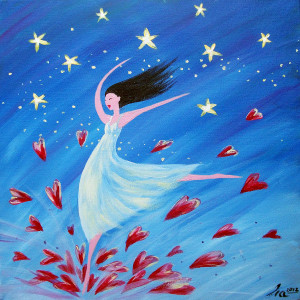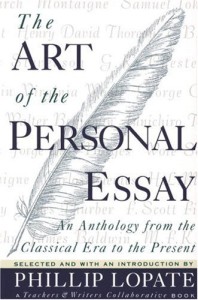
It’s been too long since I’ve written an essay. I’ve been busy with other writing projects, and querying agents for my novel. And even thinking of working on a new novel. (Thinking is part of the process.) So yesterday I decided to write an essay, and this morning I started on it. I was prompted by a listing in the May/June 2016 issue of Poets & Writers Magazine for Creative Nonfiction journal’s essay contest:
A prize of $1,000 and publication in Creative Nonfiction is given quarterly for an essay. The theme for the Winter 2017 issue is “Joy.” The editors will judge. Submit an essay of up to 4,000 words with a $20 entry fee ($25 to receive a subscription to Creative Nonfiction) by May 16. There is no entry fee for subscribers. All entries are considered for publication. Visit the website for complete guidelines.
And so I went to the CNF website to learn more:
Too often the moments that move us to write are bleak ones—stories of loss, hardship, or learning through painful interactions. For this issue we’re looking for well-crafted narratives that explore the brighter moments in life, those that teach and enlighten us through their beauty or humor.
Yes. I can do that. So much of my own writing has been motivated by painful memories… it will be a nice change to write about joy. And then I sat down to write, and I found it challenging. It’s easy to be overly cheerful, simplistic, or sentimental when writing about “happy” times. I revisited the CNF guidelines for more direction:
Your tale of joy need not revolve around ecstatic delight or a once-in-a-lifetime moment; we are equally interested in thoughtfully-written pieces about finding pleasure in small things or unexpected places, and in works that highlight moments of joy in the midst of otherwise difficult circumstances.
 And finally the journal guidelines encourage the writer to “avoid sentimental, uncomplicated “feel-good” stories.”
And finally the journal guidelines encourage the writer to “avoid sentimental, uncomplicated “feel-good” stories.”
This morning I wrote 1200 words—about one third of an essay. I took a lunch break and then read what I had written. It’s tempting to throw it away and/or start over, but I think I’ll finish what I started and then make that decision after more revisions. Whether or not I enter the CNF contest, it feels good to be writing an essay. To be trying. The word essay comes from the French essayer, which means “to try” or “to attempt.” Before continuing my attempt I read again parts of Phillip Lopate’s introduction to The Art of the Personal Essay. My writing tends to be very personal, and the essay I’m drafting already has that feel to it. And what feel is that? Lopate says:
The hallmark of the personal essay is its intimacy. The write seems to be speaking directly into your ear, confiding everything from gossip to wisdom. Through sharing thoughts, memories, desires, complaints, and whimsies, the personal essayist sets up a relationship with the reader, a dialogue—a friendship, if you will, based on identification, understanding, testiness, and companionship.
I think I’ve been striving for that intimacy in my blog posts here for the past nine years. And in my published essays to date. But I want to stretch my effort—my trying—with this piece. I want to take it beyond the personal to the universal, to make my readers care about events that were personal to me. More on this from Lopate:
At the core of the personal essay is the supposition that there is a certain unity to human experience. As Michel de Montaigne, the great innovator and patron saint of personal essayists, put it, ‘Every man has within himself the entire human condition.’ This meant that when he was telling about himself, he was talking, to some degree, about all of us.
Spoiler alert: my essay is about my children, and specifically about my experiences adopting all three of them. So right there, am I limiting my audience? Will people who don’t have adopted children, and people who were not themselves adopted be interested in my thoughts? It’s up to me, the essayists, to be sure they are. How? Again, from Lopate:
The personal essay has an open form and a drive toward candor and self-disclosure. Unlike the formal essay, it depends less on airtight reasoning than on style and personality, what Elizabeth Hardwick called ‘the soloists’ personal signature flowing through the text.’
That’s all I’ve got to do—create an emotional intimacy with my readers as I spill my guts about the joy I experienced as a result of adopting three children, all the while wowing those readers with my style and personality. All I can say is I’m going to keep trying.
P. S. You can get a hardcover copy of The Art of the Personal Essay at Barnes & Noble online right now for $1.99. Incredible bargain.
P.S.S. Another helpful book for those trying to write essays is Dinty Moore’s Crafting the Personal Essay.